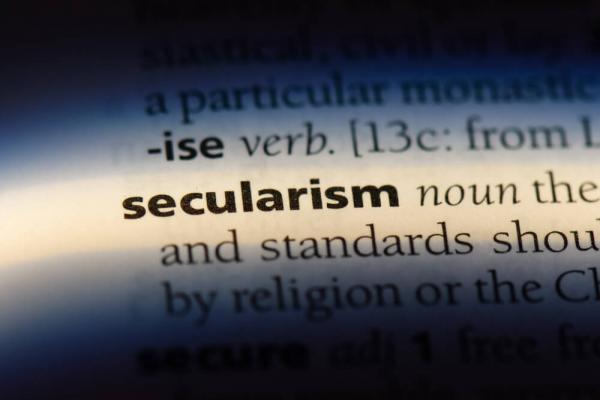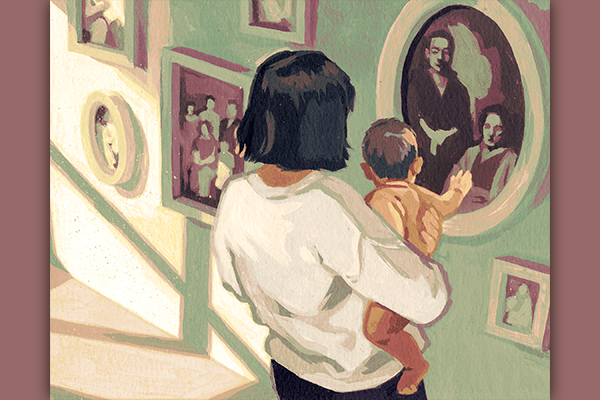Some years ago, I was supervising a focus group of nonreligious Latinxs. The topic of the focus group was politics and religion. As the discussion progressed, someone meekly mentioned that they were not religious, apparently expecting the judgment of their fellow group members. But they were not judged. One by one, fellow group members surprised each other as they admitted that they were also not religious. They were unaware that there were others like them. Their experiences have been ignored by their ethnic communities and society at large because they do not fit the stereotype of the pious Latinx. Nevertheless, it’s important for religious people and the broader public to understand this particular group.
People with no religious affiliation, also known as “nones,” are not just present in the Latinx community; nones are the fastest-growing cohort among Latinx people. These nones can be atheist, agnostic, or of no particular religious membership. This group now comprises nearly one-fifth of the adult Latinx population but tends to be ignored by mainstream media and by a Latinx establishment that sees Christian identity as one of the defining characteristics of Latinx people. However, the exodus of Latinxs from religion is a real phenomenon and one that deserves more attention for two reasons.
First, Latinx nones are not a fringe minority. Two of the most respected polling organizations on religion in the United States, the Pew Research Center and PRRI, estimate that nones are around 20 percent of the Latinx population. Like Latinx Protestants, according to the 2014 Pew Religious Landscape Survey, most of the gains of the nones (though not all) come at the expense of Catholics. However, unlike Latinx Protestants, the growth of the nones has exploded in the last ten years.
Nearly three decades ago, Latinx nones were indeed a rarity. In 1990, according to the National Survey of Religious Identification (NSRI), just 6 percent of Latinx people were nones. By 2008, the American Religious Identification Survey (ARIS) , found that 12 percent of Latinx adults identified as nones. In a 2010 report coauthored by Dr. Barry Kosmin , Dr. Ariela Keysar, and myself , we noted that the 12 percent figure represented a doubling from 6 percent compared to the study's predecessor, the 1990 NSRI. In real numbers, taking into account population growth, Latino nones nearly quadrupled from about 1 million to almost 4 million.
Since 2008, the growth has accelerated. Latinx nones have further increased from 12 percent to 20 percent in less than ten years. These figures suggest that the number of Latinx adults with no religious affiliation has doubled from the roughly 4 million in 2008 to about 8 million today. The nones are not a minor group that can be easily dismissed. Latinx nones are everywhere.
Second, the exodus of Latinxs from religion needs to be taking seriously because ignoring the existence of the nones is disrespectful. Many Latinx nones or those who, like in my case, are outright atheists are often dismissed as going through "a phase" and that we will return to the fold at some later point in life when we get married and have a family. Latinx Christians should think hard about why so many people are leaving the religious traditions they were raised in instead of assuming that people are not giving serious thought to shedding part of their identity.
Evidence shows that most of the Latinx people who have left religion are not necessarily returning. In 2008, the ARIS survey found that 9 percent of Latinx people over the age of 55 said they had no religion. The 2014 Pew survey found, just 6 years later, that among those 60 and older — the comparable time-lagged age group — 9 percent were not religious. Among the other two cohorts analyzed in the ARIS 2008, the percentage of nones did not just remain stable, it grew: from 11 percent to 15 percent among 35-60-year-olds. It almost doubled, from 15 percent to 27 percent, among people between 25 and 34 years. Nearly one-third (32 percent) of Latinx people 24 years or younger, too young to have participated in the 2008 ARIS, are nonreligious according to Pew.
In other words, as they grow older, Latinx nones are not returning to religion. Instead, more people are joining them in abandoning religion. There are other signs that they may not return to the flocks. Half of Latinx nones who are married are in a relationship with another none. Sixty-two percent of Latinx nones with children do not pray with their children.
My own life serves as testimony for these trends. Though I have been openly atheist since my early 20s, it was not until I worked as an analyst in the ARIS survey that I discovered that there were many more like me. In those first years after "coming out" atheist, many people in my circle thought I was simply going through a phase. Instead, I started writing about Latinx nones and over time found many people like me. I met Latinx activists in secular organizations. I saw people who I had known for years, telling me they were also nones or atheists. I developed a community of nones, of all races, where I felt comfortable. This is happening all over the country.
Sometimes I wonder what happened to the members of that focus group those years ago. Did they go home and Google meetup groups in their area, like the ones in Chicago and Fresno where Latinx nones have been joining to convene in person with others like them? Or have they found groups like the Secular Latino Alliance in Facebook, one of many growing virtual communities for Latinx nones? The existence of these groups and communities online allows many nones to avoid going to a church just to find a community of other Latinx people.
While Latinx nones may look elsewhere for a sense of belonging, many of us support progressive ideals that our religious brothers and sisters care about. In an era when Latinx people are under constant attack, we need to stick together. The Latinx community may not always unite around religious identity, but we should not let religion divide us. This requires understanding from both sides.
Got something to say about what you're reading? We value your feedback!






